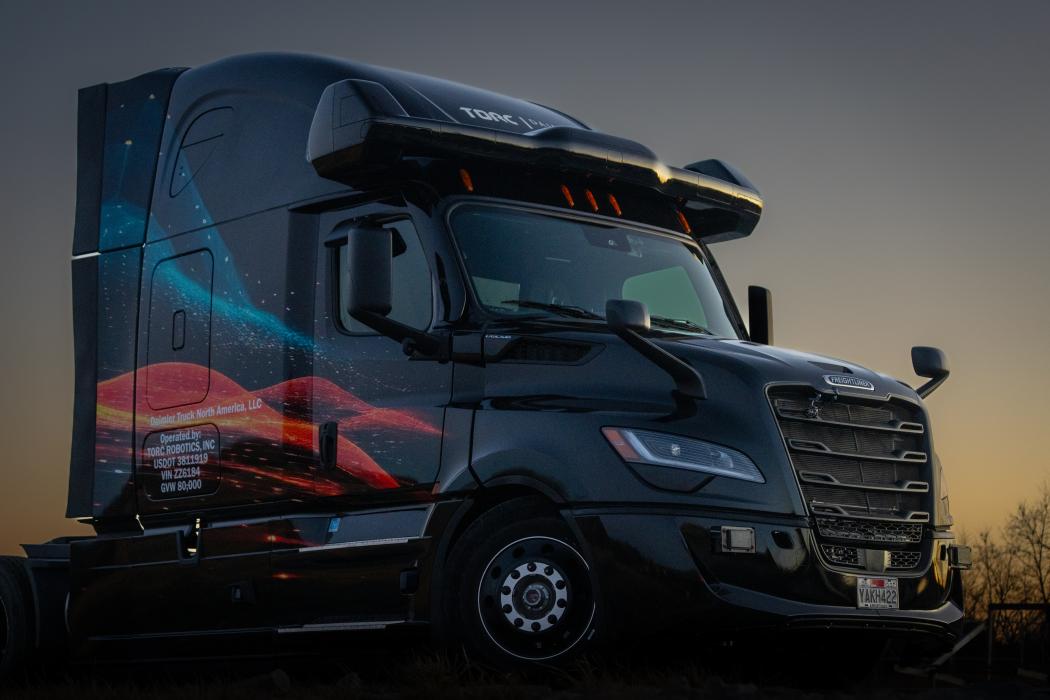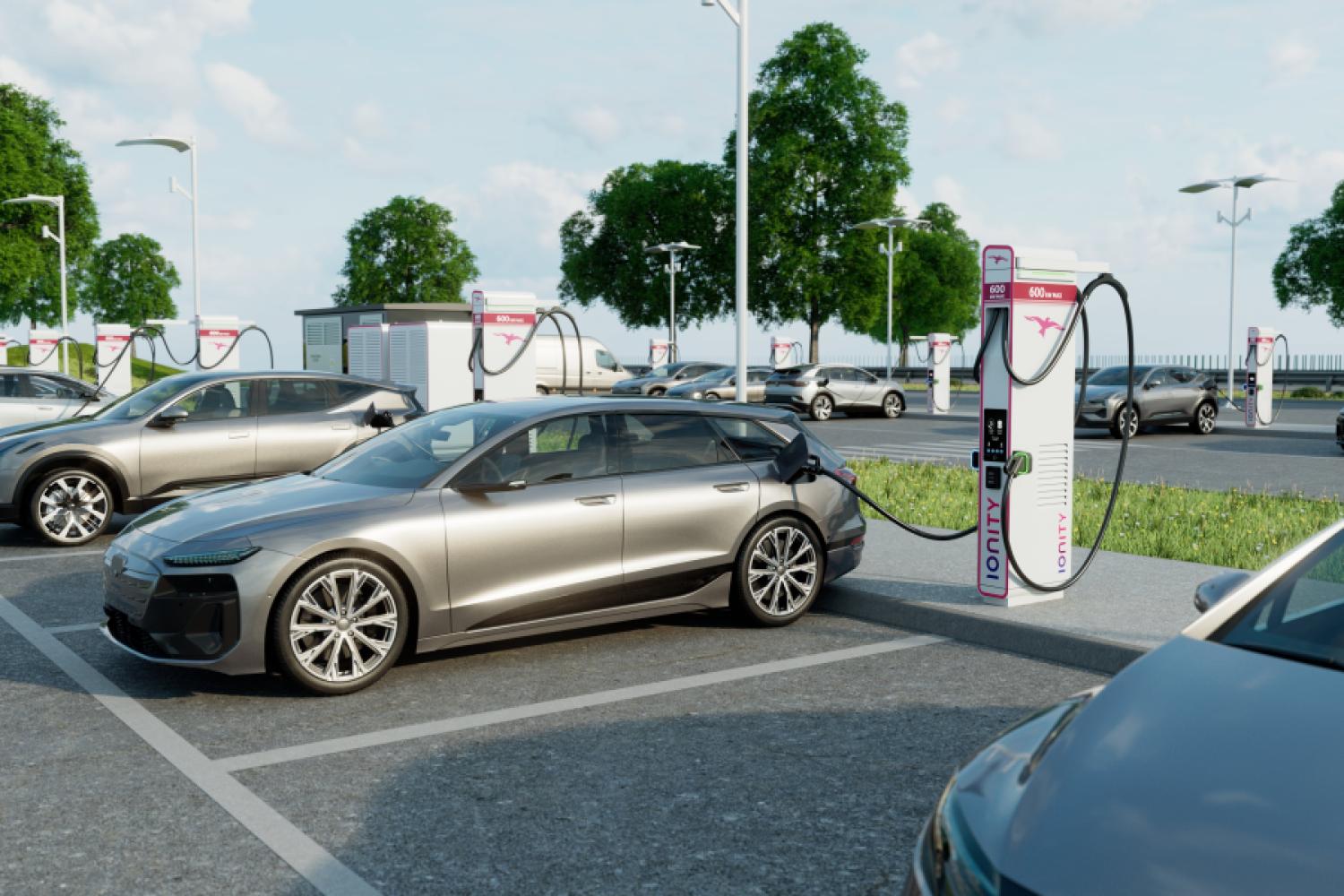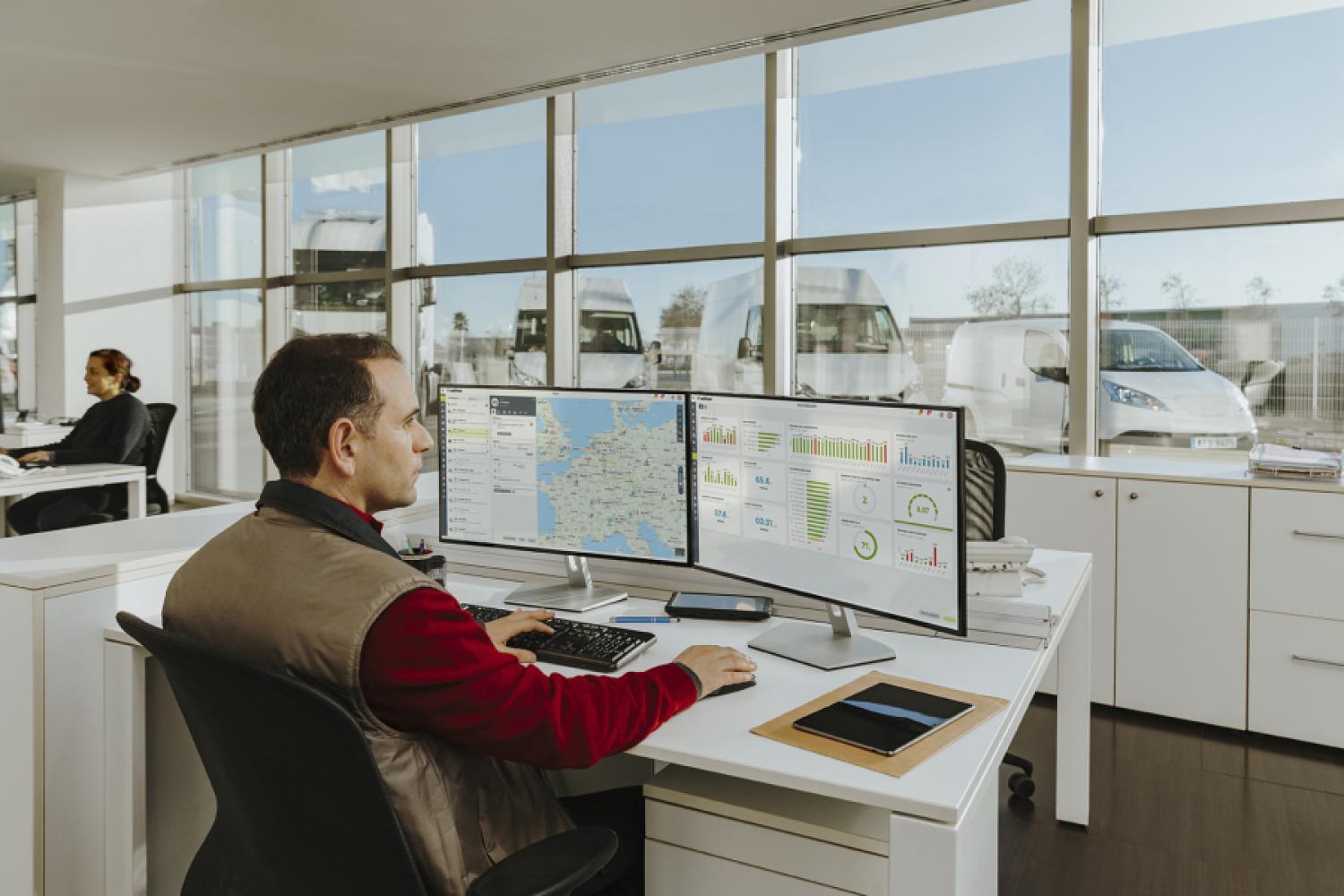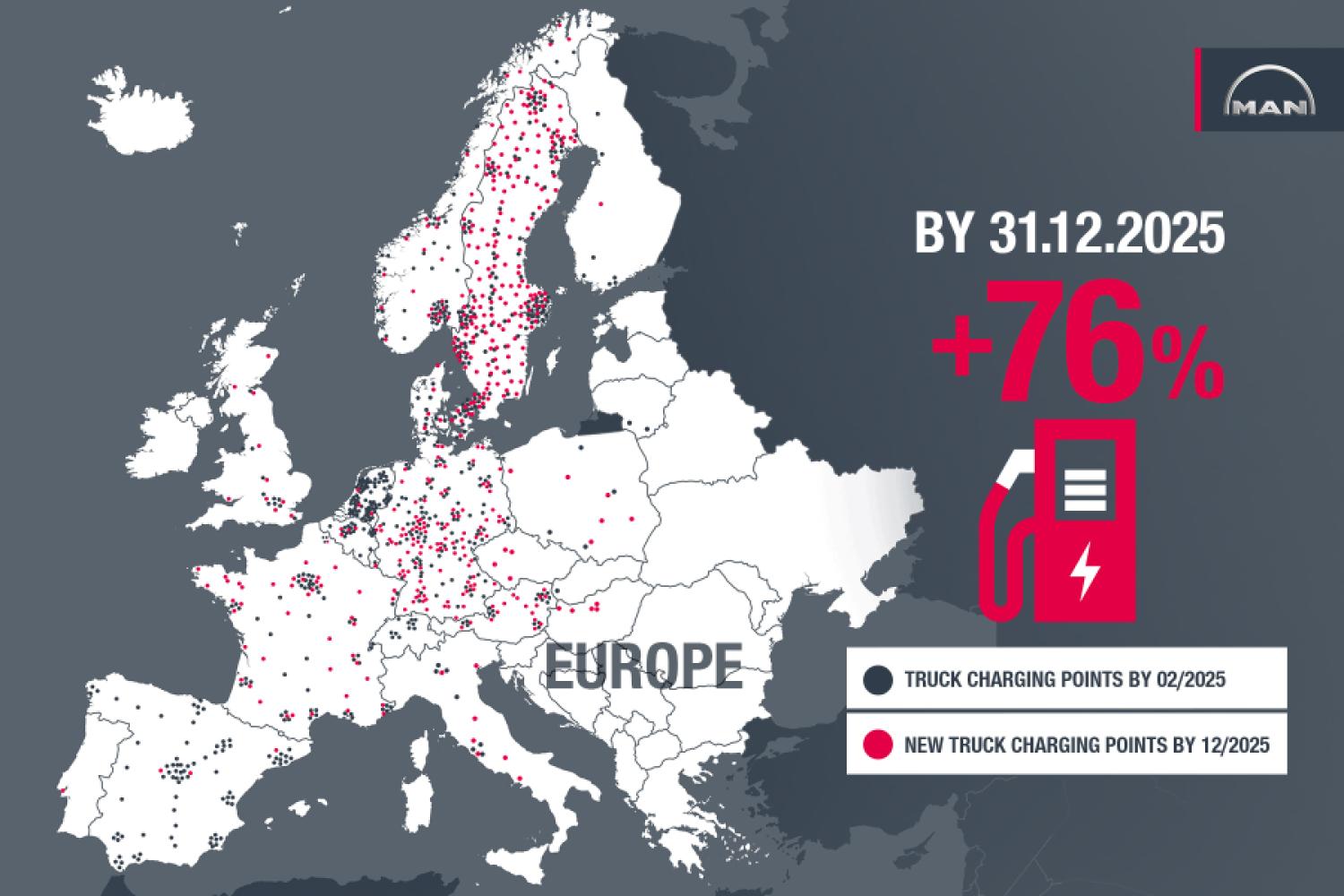In the USA, Daimler Truck has delivered the latest development stage of its “Autonomous-Ready” truck platform to Torc Robotics. According to the manufacturer, this version is based on the new fifth-generation Freightliner Cascadia and includes redundant safety features that are necessary for autonomous driving. Consequently, Daimler Truck subsidiary Torc Robotics is in the product validation phase, which lays the foundation for the commercialization of autonomous trucks in the USA.
The new vehicles will initially be tested on existing test routes in the US states of New Mexico, Texas, and Arizona. The commercial vehicle manufacturer also indicates that the route between Laredo and Dallas, one of the busiest freight corridors in the country, is included in the test. Here, the trucks are to prove their performance in autonomous driving mode under real conditions. The route not only connects major cities like San Antonio and Austin but is also of strategic importance for freight transport between the US states.
Autonomous Trucks – A Decisive Step for the Industry
With the delivery of the new Freightliner Cascadia, Daimler Truck is taking an important step towards a scalable, autonomous driving fleet. The development of a redundant vehicle platform, which includes essential safety features in areas such as brakes, steering, power supply, and communication network, is intended to ensure safe operation without human intervention. The platform forms the basis for the integration of autonomous driving systems, which are further refined together with Torc Robotics.
As Daimler Truck further explains, the company relies on a state-of-the-art, redundant architecture. This is designed to ensure that the truck can continue to drive safely even in the event of a system failure. Over 1,500 technical requirements have already been defined and integrated into the vehicle platform to enable safe autonomous driving at Level 4 (fully autonomous).
Partnership between Daimler Truck and Torc Robotics
The collaboration between Daimler Truck and Torc Robotics is now entering its sixth year and represents a central partnership for the development of autonomous trucks. Peter Vaughan Schmidt, CEO of Torc Robotics, emphasizes:
“The full integration of the autonomous driving system into the Freightliner Cascadia platform creates the industry's first scalable, AI-based solution. This will not only increase revenue but also drive the transformation of the entire logistics industry.”
The close collaboration between the two companies allows for the targeted addressing of the technical challenges of autonomous driving. Torc Robotics is responsible for the further development and integration of the autonomous driving system, while Daimler Truck provides the vehicle platform, which is tailored to the requirements of autonomous driving.
Future Prospects: Market Launch in 2027
Daimler Truck and Torc Robotics plan to launch SAE Level 4 autonomous trucks in the USA by 2027. These trucks will be capable of autonomously taking over the entire dynamic driving task between two logistics centers. This could not only alleviate the driver shortage but also significantly enhance efficiency and safety in road freight transport.
Autonomous trucks have the potential to further reduce the number of accidents since they can operate around the clock without fatigue or distraction. Thus, autonomous driving represents a crucial advantage for the industry by optimizing logistics processes and making freight transport on heavily trafficked routes more efficient.
Conclusion
Daimler Truck is taking another significant step into the future of autonomous driving with the delivery of the "Autonomous-Ready" version of the Freightliner Cascadia. Together with Torc Robotics, the company aims to use the coming years to further test the technology and prepare it for commercial use.






